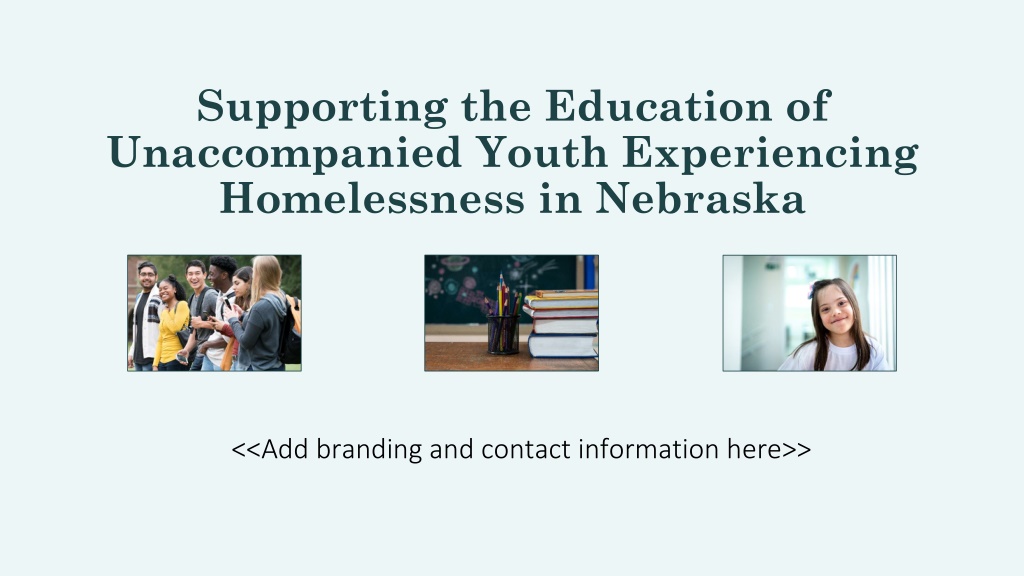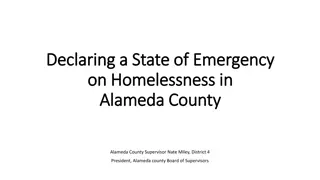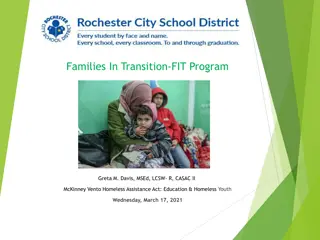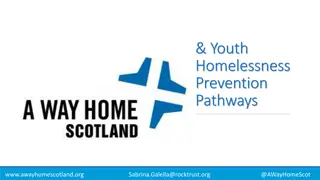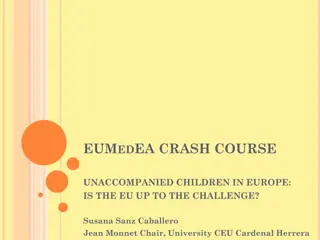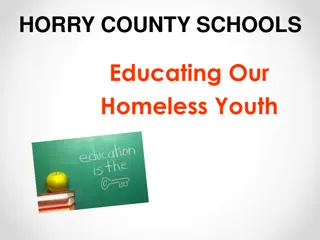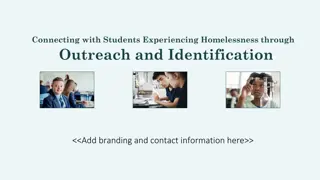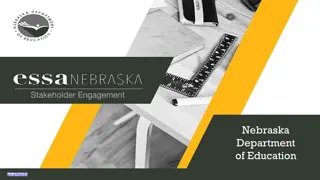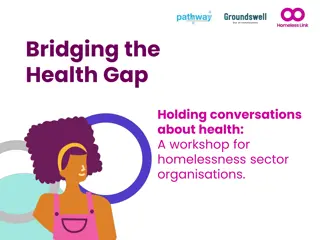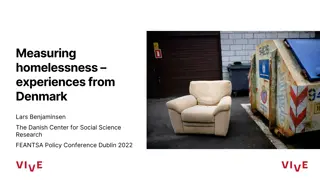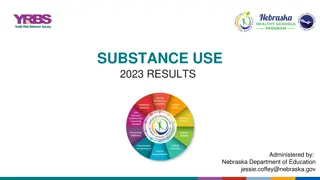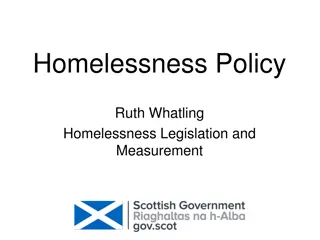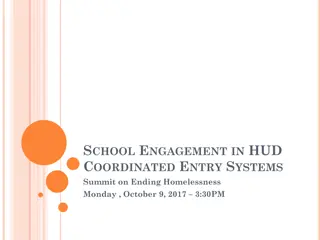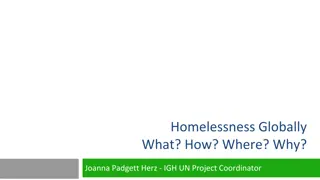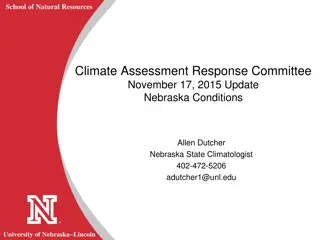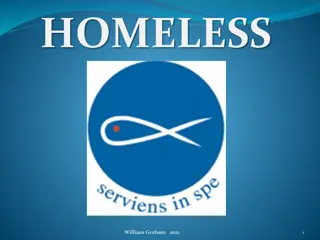Supporting the Education of Unaccompanied Youth Experiencing Homelessness in Nebraska
Learn about the educational rights and supports available for unaccompanied youth in Nebraska who are experiencing homelessness. Discover resources and guidance on addressing the unique educational barriers they face under the McKinney-Vento Act. Understand the definition of homeless and unaccompanied youth used in public schools and how state education departments provide assistance through designated coordinators and liaisons.
Download Presentation

Please find below an Image/Link to download the presentation.
The content on the website is provided AS IS for your information and personal use only. It may not be sold, licensed, or shared on other websites without obtaining consent from the author. Download presentation by click this link. If you encounter any issues during the download, it is possible that the publisher has removed the file from their server.
E N D
Presentation Transcript
Supporting the Education of Unaccompanied Youth Experiencing Homelessness in Nebraska <<Add branding and contact information here>>
Todays Roadmap Who are unaccompanied youth? Educational rights and supports for unaccompanied youth Resources for more information
McKinney-Vento Basics Subtitle VII-B of the McKinney-Vento Homeless Assistance Act Was reauthorized by Title IX, Part A of the Every Student Succeeds Act Establishes the definition of homeless and unaccompanied youth used by U.S. public schools Addresses the unique educational barriers and challenges faced by students experiencing homelessness Requires state education departments to designate a State Coordinator for Homeless Education and school districts to designate a local homeless education liaison
Who Is Homeless? Children and youth who lack a fixed, regular, and adequate nighttime lack a fixed, regular, and adequate nighttime residence residence, , including Living in a public or private place not designed for or ordinarily used as a regular sleeping accommodation Sharing the housing of other persons, due to loss of housing, economic hardship, or a similar reason Living in cars, parks, public spaces, abandoned buildings, substandard housing, bus or train stations, or similar settings Living in motels, hotels, trailer parks, or camping grounds due to the lack of alternative adequate accommodations Living in emergency or transitional shelters, or abandoned in hospitals Migratory children living in the above circumstances
Unaccompanied Youth The term unaccompanied youth includes a homeless or youth not in the physical custody of a parent or guardian homeless child For a student to be an unaccompanied youth, they must be experiencing homelessness experiencing homelessness and and unaccompanied unaccompanied The McKinney-Vento Act does not include age-related eligibility criteria, including for unaccompanied youth
But the student chose to leave A student may be considered an unaccompanied youth regardless of whether the student was forced from the home or ran away The cause of student/parental separation may not be disclosed readily due to its sensitive or private nature Determinations of McKinney-Vento eligibility for unaccompanied youth should be made on a case-by-case basis focusing on the nature of the student s nighttime residence
Causes of Youth Homelessness Youth may run away or be forced from the home due to family conflict related to Parental abuse or neglect The youth s or parent s alcohol or drug use The youth s sexual orientation, gender identity, or pregnancy Other challenging household dynamics, including economic hardship Source: Congressional Research Service, Runaway and Homeless Youth: Demographics and Programs
Risk Factors for Youth Homelessness Source: Chapin Hall, Missed Opportunities: Youth Homelessness in America, National Estimates
Effects of Youth Homelessness Homeless youth experience disproportionately high rates of Unmet basic needs Poor health Untreated mental health issues Substance use Sexual, physical, or criminal exploitation School disengagement Source: Congressional Research Service, Runaway and Homeless Youth: Demographics and Programs
Opening Doors with Education Source: Chapin Hall, Missed Opportunities: Education Among Youth Experiencing Homelessness in America
Educational Rights and Supports for Unaccompanied Youth
Educational Rights and Supports Unaccompanied youth have the same educational rights Act as students experiencing homelessness with a parent or guardian same educational rights under the McKinney-Vento Immediate school enrollment, even if lacking required documentation College preparation and readiness assistance Comparable services School selection (school of origin or local school) Title I, Part A services School of origin transportation Free school meals Visit the website of the Nebraska Department of Education or the National Center for Homeless Education for more information.
Educational Rights and Supports Immediate enrollment, even without a parent or guardian Prioritization of the unaccompanied youth s requested school in best interest determinations Targeted support from the local liaison Obtaining needed records once immediate enrollment has occurred Accessing school of origin transportation Accessing the McKinney-Vento dispute resolution process
Access to Federal Student Aid Local liaisons must inform unaccompanied youth of their independent student status independent student status on the Free Application for Federal Student Aid (FAFSA) and assist with verification of this status Independent students do not include parent information on their FAFSA, and their federal aid is calculated based only on the student s income and assets Access a template for documenting independent student status from SchoolHouse Connection
Special Education Under the Individuals with Disabilities Education Act (IDEA), a parent usually serves as the student s educational decisionmaker IDEA defines parent as a natural, adoptive, or foster parent; a guardian (but not the state if the child is a ward of the state); an individual acting in the place of a natural or adoptive parent with whom the child lives, or an individual who is legally responsible for the child s welfare
Special Education For unaccompanied youth who do not have a parent who is willing and/or able to act as educational decisionmaker: A surrogate parent surrogate parent, who may not be involved with the care or education of the child, should be appointed within 30 days A temporary surrogate parent temporary surrogate parent, who may be involved with the care or education of the child, may be appointed immediately
Removing Barriers The McKinney-Vento Act requires school districts to develop, review, and revise develop, review, and revise policies and practices policies and practices that create educational barriers for McKinney-Vento students, including unaccompanied youth For more information, download the National Center for Homeless Education s Supporting the Education of Unaccompanied Students Experiencing Homelessness issue brief
For More Information NDE homeless education webpage SchoolHouse Connection website National Center for Homeless Education website U.S. Department of Education EHCY Program Non-Regulatory Guidance
Thanks for Joining! <<Add branding and contact information here>>
